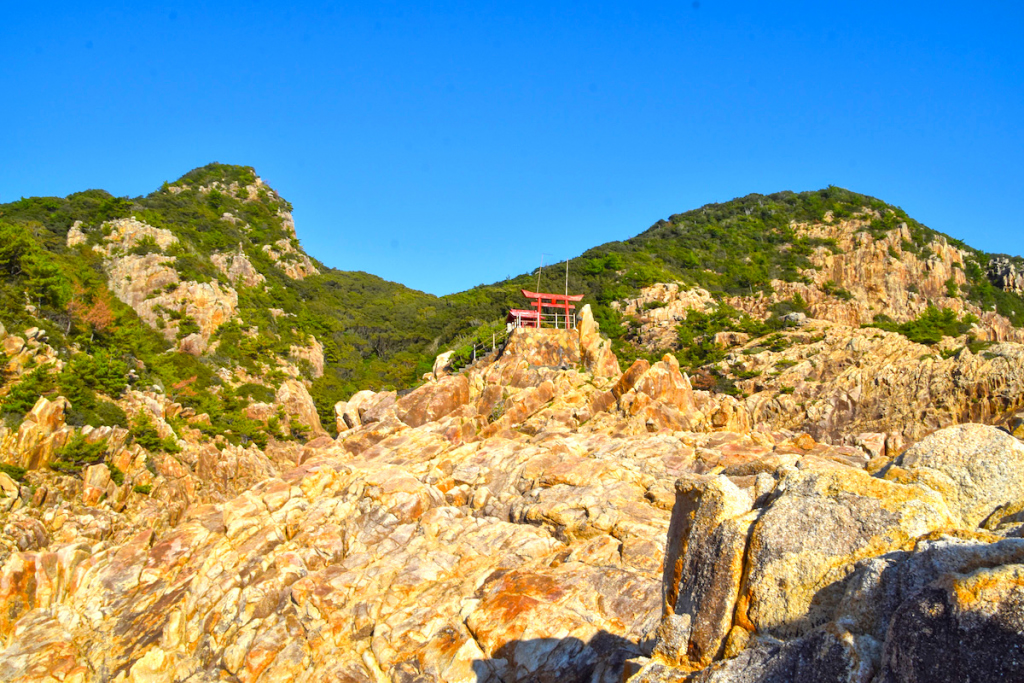Ashizuri-Uwakai National Park, located in Shikoku’s southernmost tip, is the epitome of what makes traveling through Japan so endlessly fascinating. Known as Ashi-Uwa to the locals, this sprawling park is an example of the ideology that you’ll be greatly rewarded if you dare to take the less trodden path.
Sprawled across Ehime and Kochi prefectures, Ashi-Uwa is home to stunning, impossibly angular coastlines, untamed foliage, and crystal clear water; a wonderland for outdoor adventure and watersports. If you’re based here and are looking for an exciting new destination, or you’re visiting and want to see a different side of the country, then spending a handful of days exploring this corner of Japan is well worth considering.
Given its size, tacking Ashi-Uwa can look like a rather intimidating feat, so we spoke with Park Ranger Haruka Yamaguchi to get the local insider tips on the must not miss places.
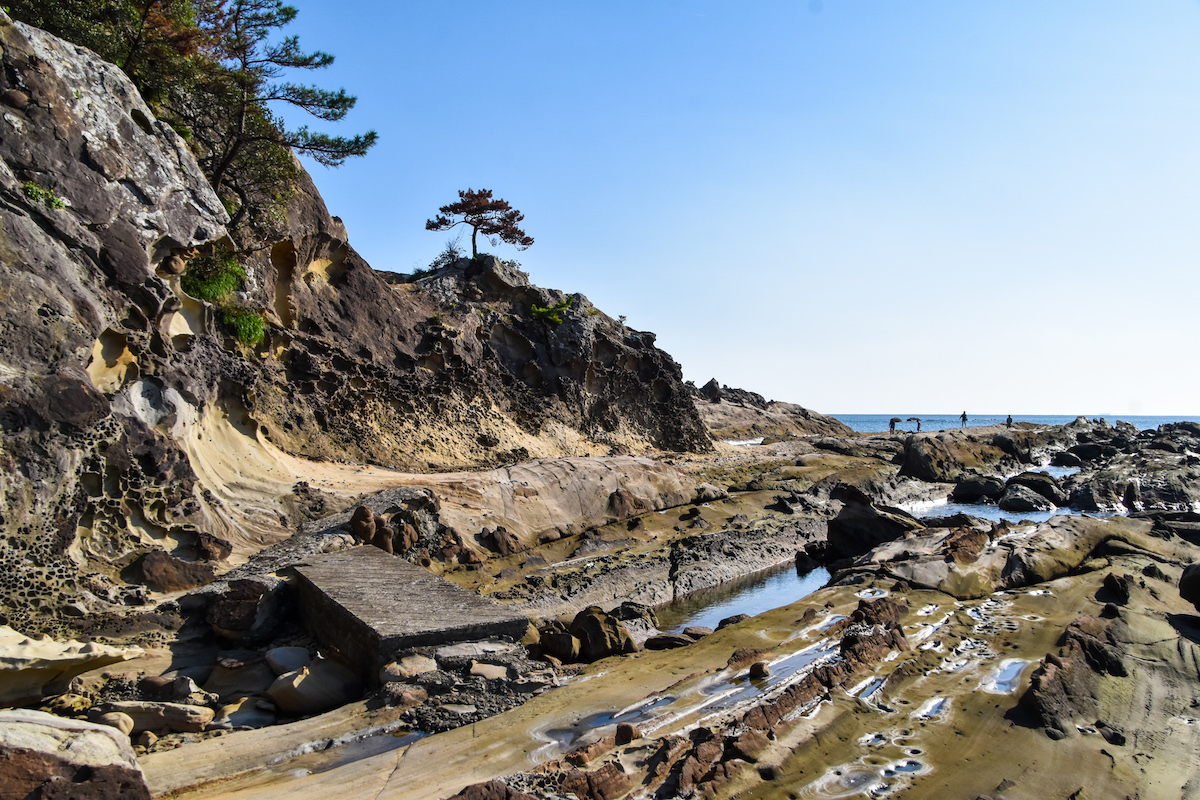
Tatsukushi (竜串)
“The rocks that make up the landscape of Tatsukushi were formed about 1,700 years ago. They developed as shallow sea strata (rock and soil) were eroded and washed away by the current and sea breeze. The area that surrounds Tatsukushi was designated as Japan’s first National Marine Park. Visitors access the area by boarding a glass-bottomed boat or scuba dive to view various tropical fish and coral, including the massive “minokoshi shikoro” leaf coral (Pavona decussata).”
The textual, angular rocks of Tatsukushi look like gravity-defying sculptures and were crafted by a series of tremors and earthquakes lifetimes ago.
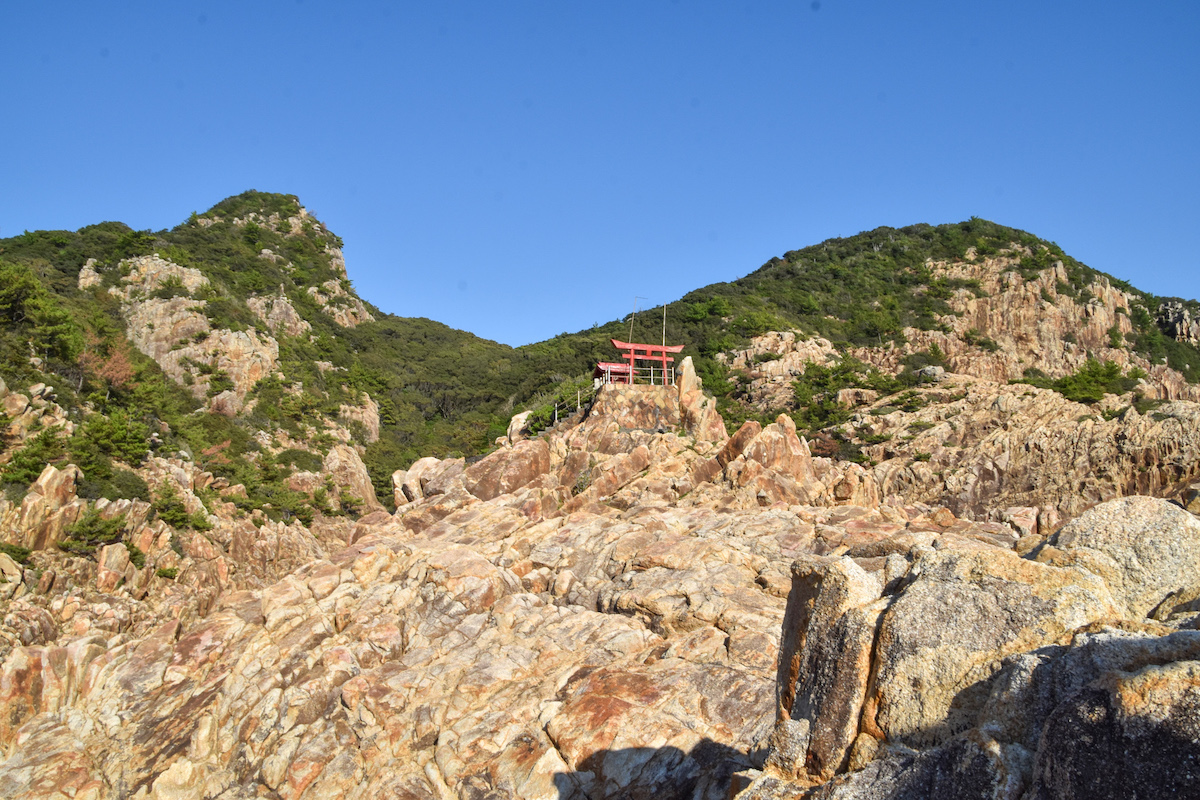
Usubae (臼碆)
“The magnificent scenery created by the granite formations is fascinating. Ryugu Shrine sits on a rocky outcropping; it’s here at this shrine fishermen’s wives once used to pray for their husbands’ safety and bountiful catches.”
The jagged, almost hypnotic pattern of the granite that makes up Usubae was formed from the cooled magma of a volcano that erupted some 13 million years ago. Sitting at the top of this mountainous formation, the bright red Ryugu Shrine punctuates the site, a symbol of the nation’s spiritual connection with nature. According to local legend, as part of their payers to the kami (god) of fishing, the fishermens’ wives would open their kimono, ‘flashing’ the shrine as part of their tribute.
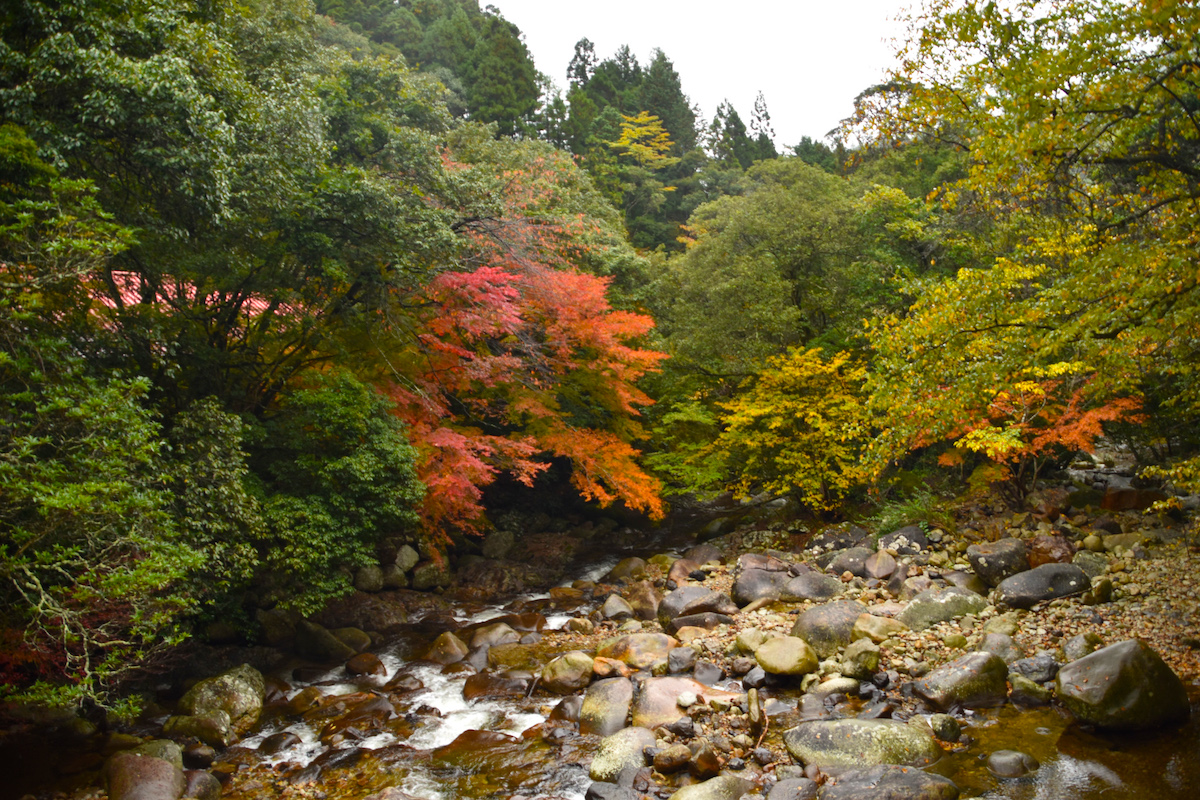
Nametoko Valley (滑床渓谷)
“Nametoko Valley is a stunning destination popular with adventure seekers and those looking to try canyoning with smooth riverbeds and gently sloped, smooth stones created by granite erosion. The waterfalls, shallows, and stream pools, as well as the beech and maple trees along the riverside, create an unbeatable canyon landscape.”
Flanked by lush green surrounds, Nametoko Gorge’s mystical landscape is dotted with naturally crafted masterpieces, like the smooth monolithic platform that is Senjojiki and the impressive Yukiwa Waterfall. However, the highlight of Nametoko Gorge is ‘Torii Rock,’ a large stone that’s balanced on an even larger stone that has been split in two, looking like a thick incarnation of a torii (shrine gate).
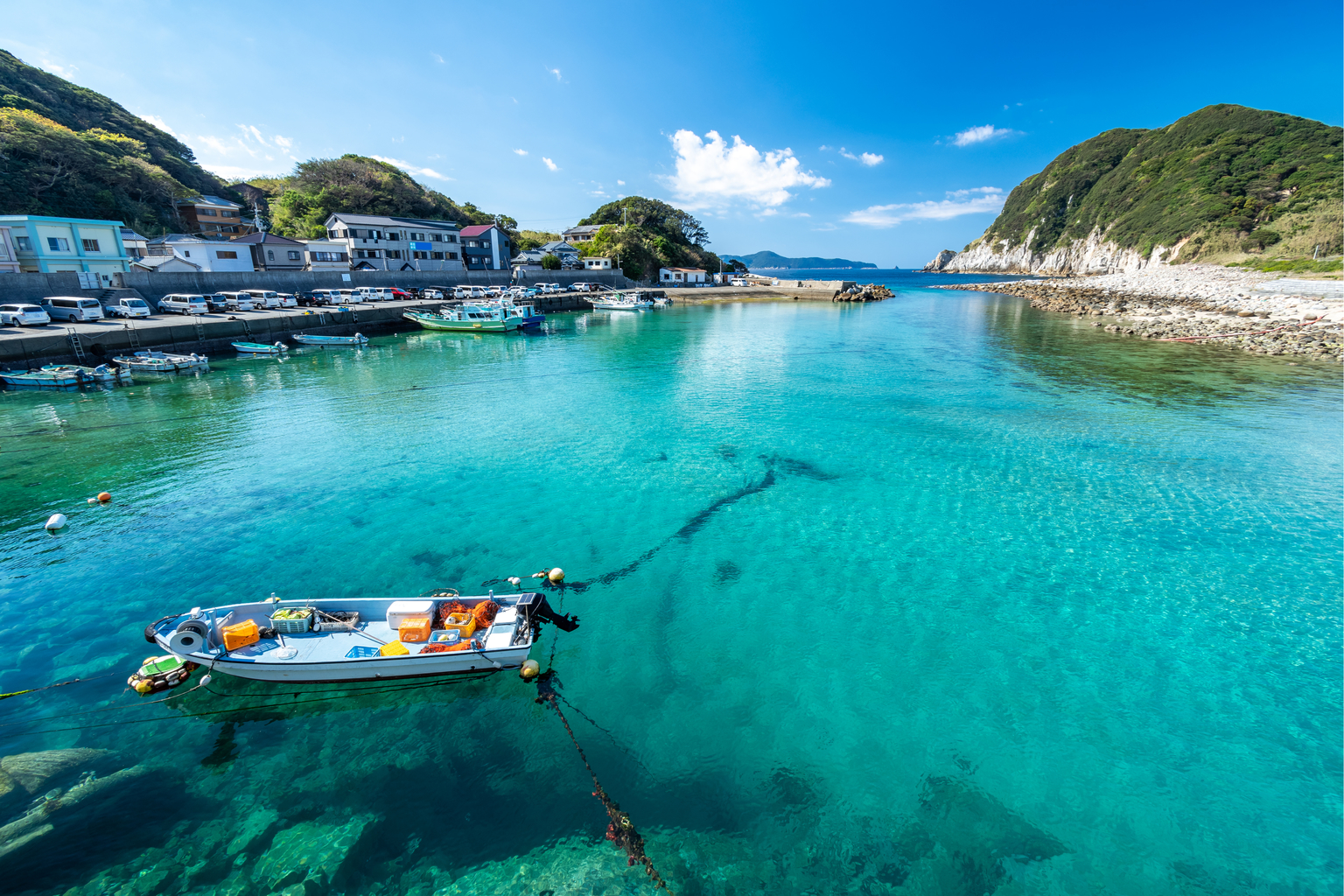
Kashiwajima Island (柏島)
“Kashiwajima is a small but scenic island with a circumference of four kilometers. It’s home to incredibly clear waters, which result from the tidal currents that pass through the area. With around 1,000 unique species of fish, it boasts the highest recorded concentration of fish species in Japan, making it a great place for visitors to go diving and snorkeling and enjoy the spectacular underwater world.”
Ideal for snorkeling, the water of Kashiwajima is stuff of legends, may folks claim that the water is so clear that you can see the shadow of the area’s boats at the bottom of the sea, giving off an impression that the boats are floating in air. If you want to see the island from a different perspective, head over to the Odoyama Observatory where you can admire the island from above, keep an eye out for the many turtles that call the surrounding coast home.
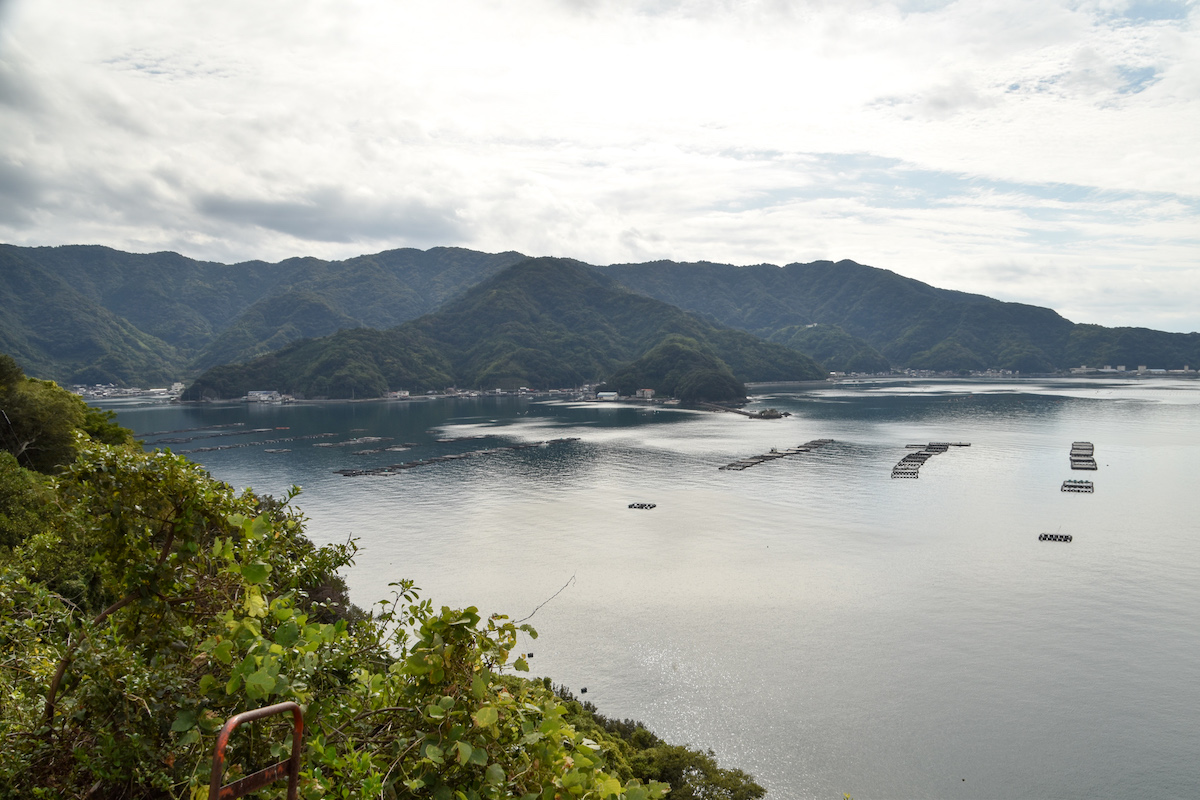
Yusu Mizugaura (遊子水荷浦)
“With sawtooth coastlines and spectacular views of terraced fields spreading all over the slopes of the cape overlooking the Uwakai Sea, the scenery found here is unique to the southern part of Ehime Prefecture. You can practically read the area’s history in the stone walls that stand proud built by human hands long ago.”
Unlike most of the nation’s other well-known terraced fields, the one you’ll find at Yusu Mizugaura are not for growing rice but instead cultivating potatoes. The field is segmented into different sections, and each section is cared for by a different person, but they’re all harvested in spring. The hard work of the farmers is celebrated with the “Dandan Festival,” is held along the coast of the mountain during the harvest season.
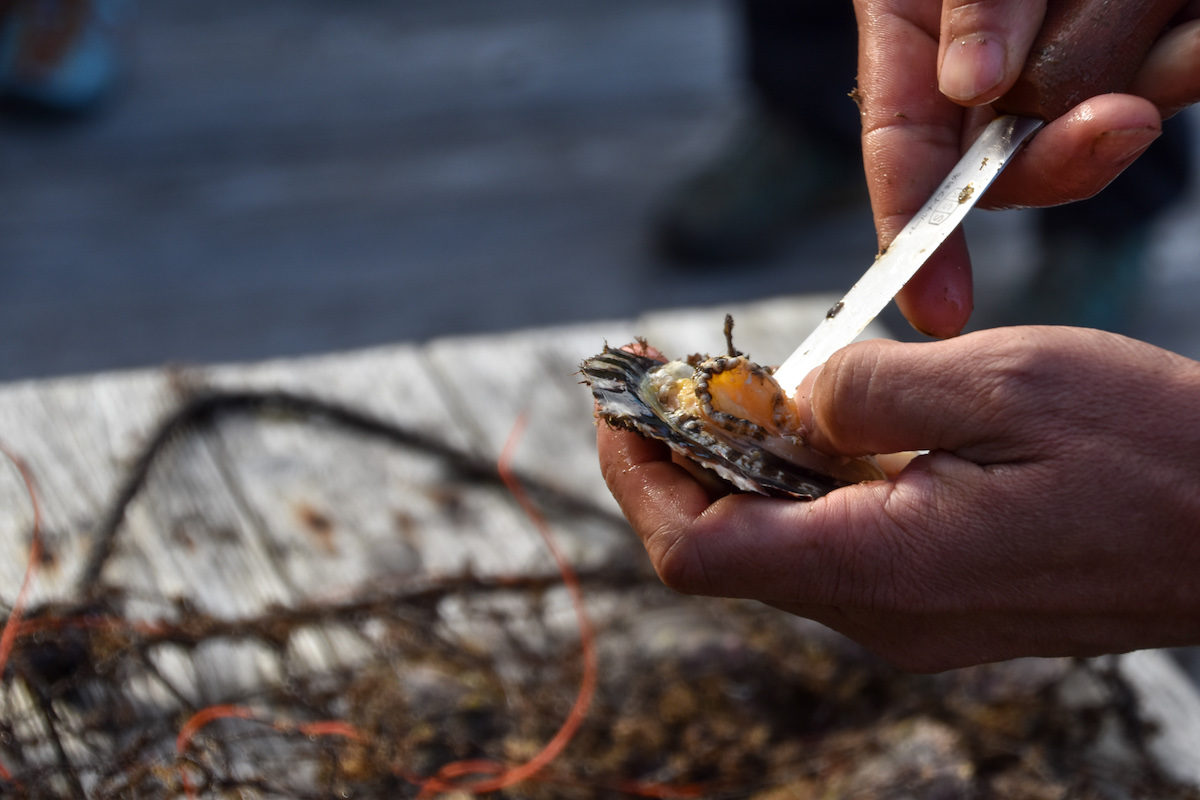
Uwajima city (宇和島市)
“Uwajima city is a place where fishing and pearl farming thrives in the calm waters surrounded by the beautiful and delicately jagged coastline. Visitors can experience what life by the sea is like in an authentic and intimate way by making traditional fishing banners, experiencing pearl farming, and eating seafood provided by local fishermen.”
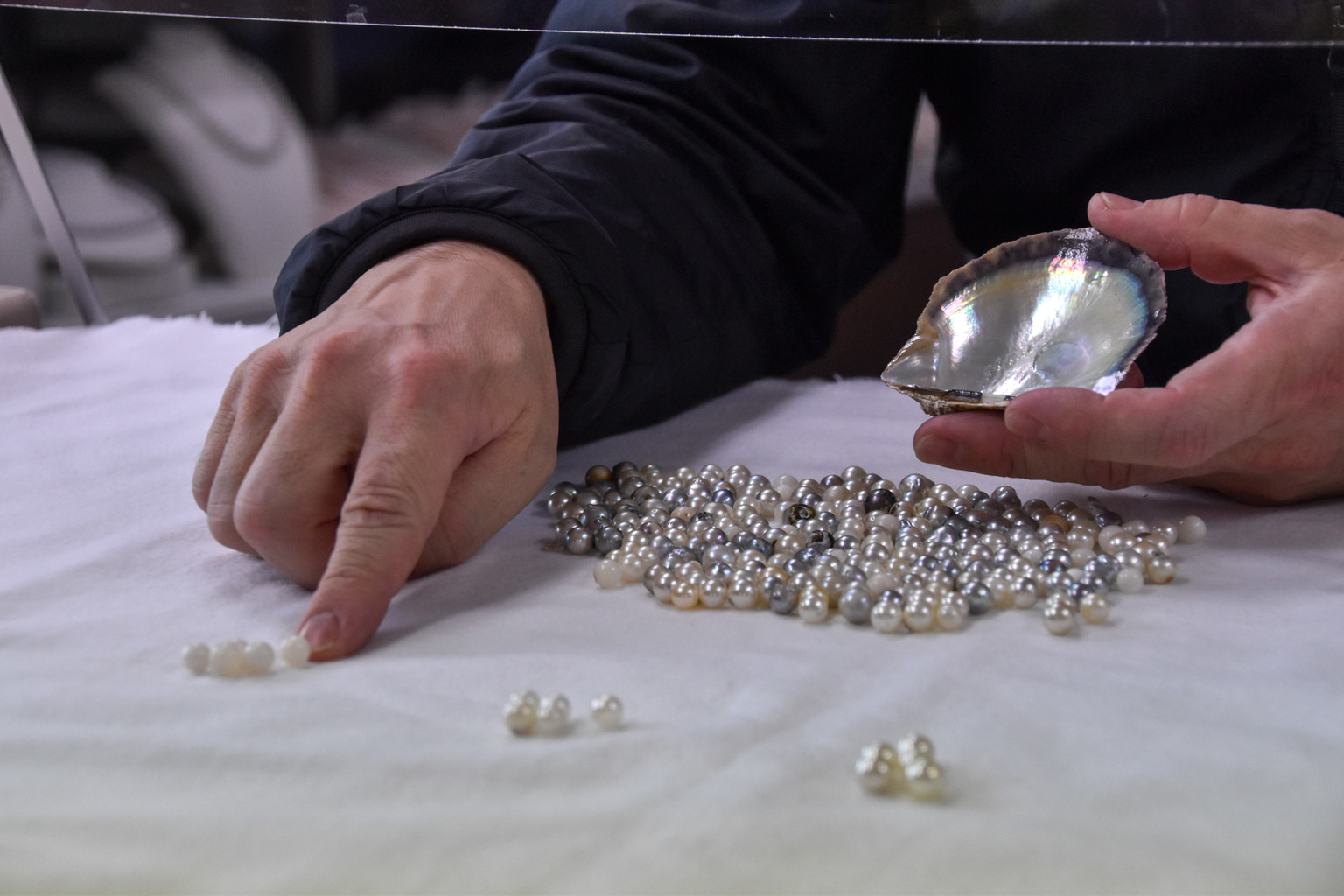
Surrounded by stunning seas and home to a population with a passion for keeping the local culture alive, Uwajima is a secretive gem of a city. It also boasts Uwajima Castle, one of only 12 castles in Japan to retain its original keep.
How to get there
From Tokyo, the quickest way to get to Ashizuri-Uwakai National Park is to fly from Haneda Airport to Kochi Ryoma Airport. If traveling via public transport, take the airport shuttle to Kochi Station (35 min), then transfer to the Ashizuri limited express train and get off at Nakamura Station (90 min).
From Nakamura Station, there are a few options for exploration; you can take a local bus from Kochi Seinan Kotsu to the Ashizuri-misaki bus stop at Cape Ashizuri (90 min). There are also bus tours around the Ashizuri area, departing from Nakamura Station for 3,800 yen, run by Kochi Seinan Kotsu. You can book this tour on the Hata Plaza Tourism Association website. On the site, you’ll also find a huge selection of other experiences for exploring the area, so take a look around.

